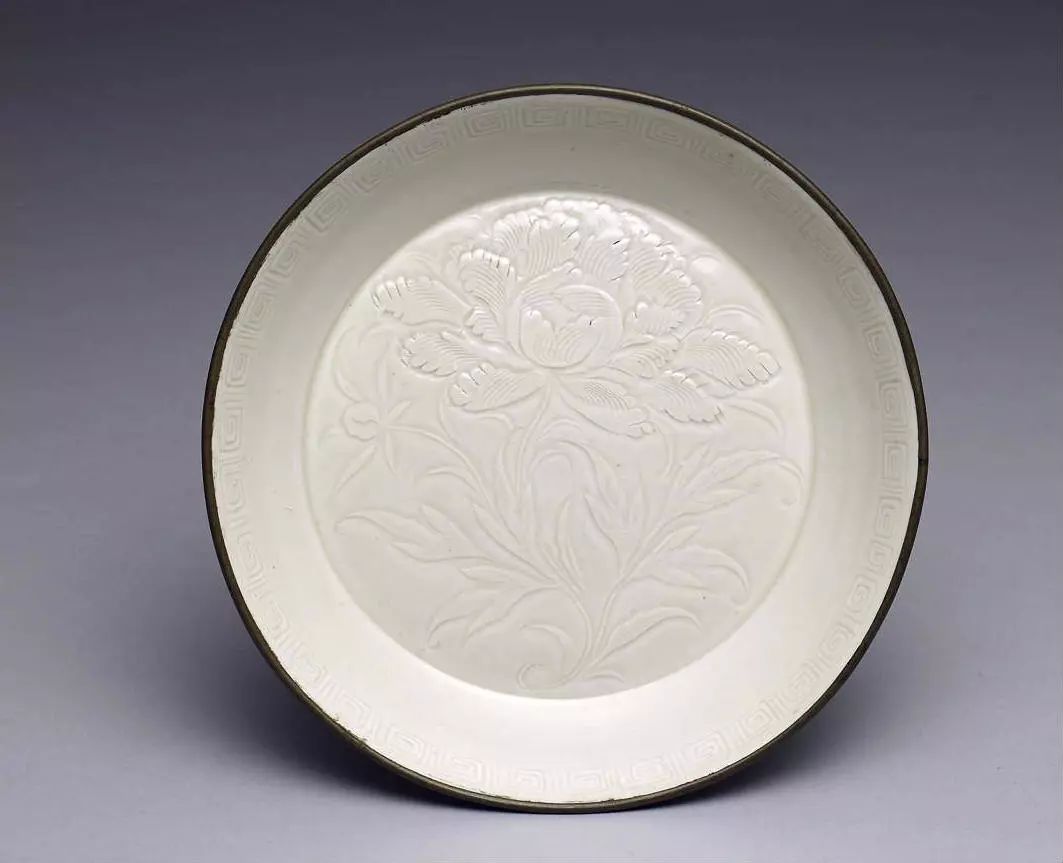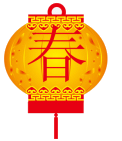
漢德百科全書 | 汉德百科全书
 Traditions
Traditions


定窑是宋代五大名窑之一,在宋代属定州境内,故名“定窑”。窑址位于现在的河北省曲阳县涧滋村、燕山村一带。
定窑创烧于唐代,经过五代,于北宋时达到鼎盛时期,在元代时虽生产,仍终止于元。以出产白瓷着称,胎薄而轻,质地坚硬,色泽洁白,不太透明,《归潜志》上说“定州花瓷瓯,颜色天下白”。 此外定窑也烧制黑釉、酱釉和绿釉等,分别称“黑定”、“紫定”、“绿定”。定窑虽然是民间瓷窑,但北宋中期之后由于品质精良、纹饰秀美为宫廷选中,也为宫廷烧造了大量瓷器,到了明清时代,评论宋代陶瓷,品评汝窑、官窑、哥窑、定窑和钧窑为宋代五大名窑,可见得定窑瓷器之盛名。
Ding ware, Ting ware (Chinese: 定瓷; pinyin: Dìngcí) or Dingyao were Chinese ceramics, mostly porcelain, produced in the prefecture of Dingzhou (formerly romanized as "Ting-chou") in Hebei in northern China. The main kilns were at Jiancicun or Jianci in Quyang County. They were produced between the Tang and Yuan dynasties of imperial China, though their finest period was in the 11th century, under the Northern Song.[1] The kilns "were in almost constant operation from the early eighth until the mid-fourteenth century."[2]
The most characteristic wares are thin porcelains with a white or greyish body and a nearly transparent white-tinted glaze,[3] though they are classed as stoneware by some.[4] Chemical analysis has shown that they were often made entirely of a kaolinitic clay without any petuntse or "porcelain stone".[5] They are mostly decorated, with uncoloured designs that are incised or in very shallow relief.
Ding ware was the most famous northern Chinese white ware under the Song, although there was increasing competition from the Qingbai ware from Jingdezhen in the south, which by the end of the Song had eclipsed Ding ware, achieving a predominance it has maintained in subsequent centuries. A key event in this process was the flight of the remaining Northern Song court to the south, after they lost control of the north in the disastrous Jin-Song wars of the 1120s. A new Southern Song court was based in Hangzhou.[6] This may have been accompanied by the movement of potters to Jingdezhen.[7]
La ceramica Ding (定瓷S, dìngcíP), deve il suo nome alla prefettura di Dingzhou, in Cina, dove veniva prodotta. Divenne molto conosciuta ed apprezzata sotto la dinastia Song (960-1279) e raggiunse l'apogeo nell'XI secolo, benché il forno di Ding fosse attivo sin dalla fine della dinastia Tang (618-986) e lo rimase fino a quella Yuan (1271-1368).
L'elemento distintivo della ceramica Ding è il colore bianco avorio o bianco crema che caratterizza la maggior parte della produzione, sebbene esistano esempi di manufatti monocromi nei colori nero, melanzana, verde scuro. La gamma di produzione di questi forni era ampia, in quanto realizzavano pezzi di alta qualità per la ricca classe mercantile e dei letterati. Le ceramiche Ding furono inoltre le prime ad essere ammesse presso la corte imperiale per uso ufficiale; sfortunatamente però la loro notorietà non durò a lungo, in quanto vennero sostituite dalla famiglia reale con i manufatti Ru già nel 1100.





 China
China
 Hongkong Tebiexingzhengqu-HK
Hongkong Tebiexingzhengqu-HK
 Macau Tebiexingzhengqu-MO
Macau Tebiexingzhengqu-MO
 Taiwan Sheng-TW
Taiwan Sheng-TW

 Traditions
Traditions

 Vacation and Travel
Vacation and Travel
 Vietnam
Vietnam

Das Drachenbootfest findet am fünften Tag des fünften Monats nach dem Mondkalender statt und erinnert an den Dichter Qu Yuan (340 bis 278 v. Chr.). Qu Yuan lebte während der Periode der Streitenden Reiche im Staat Chu und hatte versucht, den König von Reformen zur Verringerung von Korruption im Staate zu bewegen. Er scheiterte jedoch aufgrund von Intrigen und wurde in die Verbannung geschickt. Als 278 v.Chr. der Staat Qin die Hauptstadt von Chu eroberte, beging Qu Yuan vor Verzweiflung Selbstmord, indem er sich in den Fluß Miluojiang stürzte. Mit Booten fuhren daraufhin die Menschen am Ufer auf den Fluß hinaus, um die Leiche des Dichters zu bergen. Diese Begebenheit wird durch die Drachenbootrennen symbolisiert, die an diesem Festtag stattfinden.
Das Drachenbootfest (chinesisch 端午節 / 端午节, Pinyin Duānwǔjié) fällt auf den 5. Tag des 5. Monats im traditionellen chinesischen Kalender, weshalb es auch „Doppelfünf-Fest“ (重五節 / 重五节 bzw. 重午節 / 重午节, Chóngwǔjié) genannt wird.
端午节是东亚文化圈的传统节日,定在每年农历五月初五,本来是夏季的一个送离五瘟神,驱除瘟疫的节日。战国时期的楚国爱国诗人屈原于这一日投江自尽,后在中国演变为端午节,以纪念屈原,有人称其为诗人节(有些地方是纪念吴国忠臣伍子胥的忌日),是华人四大节日之一,与新春、中秋等节日同属东亚文化圈的中国大陆、香港、澳门、台湾、新加坡、马来西亚、日本、朝鲜半岛、越南的重要传统节日。
端午(たんご)は、五節句の一つ。端午の節句、菖蒲の節句とも呼ばれる。日本では端午の節句に男子の健やかな成長を祈願し各種の行事を行う風習があり、現在ではグレゴリオ暦(新暦)の5月5日に行われ、国民の祝日「こどもの日」になっている。少ないながら旧暦や月遅れの6月5日に行う地域もある。尚、中国語圏では現在も旧暦5月5日に行うことが一般的である。
The Dragon Boat Festival is a traditional holiday which occurs on the 5th day of the 5th month of the traditional Chinese calendar.
La fête des bateaux-dragons, ou fête du double cinq, est une fête chinoise marquant l'entrée dans les chaleurs de l'été et commémore la mort de Qu Yuan (屈原). Elle a lieu le cinquième jour du cinquième mois lunaire, soit fin mai ou début juin dans le calendrier grégorien.
Elle est associée a la mémoire du poète chinois Qu Yuan1.
Dans le monde chinois, elle s'appelle la fête de duanwu (chinois simplifié : 端午节 ; chinois traditionnel : 端午節 ; pinyin : ), abrégé en duānwǔ (端午), en coréen danoje (端午祭/단오제) ou plus souvent abrégé en Dano (端午/단오), en japonais Tango no Sekku (端午の節句), généralement abrégé en Tango (端午), en vietnamien Tết Đoan Ngọ (節端午), qu'on pourrait abréger en Đoan Ngọ, en japonais ryuku, tanwu (端午).
La festa delle barche drago (龍船節T, 龙船节S, LóngchuánjiéP o 龍舟節T, 龙舟节S, LóngzhōujiéP), chiamata anche festa di Duanwu (端午節T, 端午节S, DuānwǔjiéP) o festa di Duen Ng (端陽节T, 端阳节S, DuānyángjiéP, letteralmente "festa dell'inizio dello yang") è una festa tradizionale cinese che si tiene il quinto giorno del quinto mese del calendario cinese; per questo è conosciuta anche come il Doppio quinto o festa del Doppio cinque (重五節T, 重五节S, ChóngwǔjiéP) e si celebra da tempo anche in altre parti dell'Asia orientale. In Occidente, è nota comunemente come festa delle barche drago e si celebra tipicamente durante i mesi estivi, con le regate e le gare di barche drago che costituiscono il nucleo centrale delle manifestazioni.
El Festival del bote del Dragón (también Fiesta de Duanwu; en chino: 端午节) es una fiesta de la compleja tradición espiritual y religiosa china, que se celebra en el 5º día del 5º mes del calendario chino tradicional. El calendario chino es lunisolar, por lo que la fecha del festival varía de año en año en el calendario gregoriano. En 2016, ocurrió el 9 de junio; en 2017, el 30 de mayo; y en 2020, el 25 de junio. Normalmente lo pasan muy bien.
De las varias historias para explicar el origen de esta celebración, la más conocida es la conmemoración de la muerte del gran poeta y diplomático Qu Yuan, quien vivió del 340 al 221 a. e. c. durante el período de los Reinos Combatientes de la dinastía Zhou.
Дуань-у или Дуаньу (кит. 端午), также называемый «двойной пятёркой», так как приходится на пятый день пятого месяца по лунному календарю, — китайский традиционный праздник календарного цикла, приходящийся на начало лета. Его название обычно переводится как праздник драконьих лодок, по наиболее распространённому в этот день обрядово-развлекательному действу — состязанию в гребле на лодках, изображающих драконов. В этот день принято употреблять в пищу цзунцзы.



| Sun's ecliptic longitude | Chinese name[8] | Korean name[9] | Vietnamese name | Japanese name | Ryukyuan (Okinawan) name | Gregorian Date[10] (± 1 day) | Reference for Month Intercalating | Remark[11][12][13] | Chinese zodiac & Earthly Branch of Month | Corresponding Astrological Sign |
|---|---|---|---|---|---|---|---|---|---|---|
| 315° | 立春 lìchūn | 立春 (입춘/립춘) ipchun/ripchun | Lập xuân (立春) | 立春(りっしゅん) risshun | 立春(りっしゅん) risshun | Feb 4 | 1st month initial | Spring Begins (Spring Commences) | Tiger (虎) Yín (寅) | Aquarius (寶瓶宮) |
| 330° | 雨水 yǔshuǐ[14] | 雨水 (우수) usu | Vũ thủy (雨水) | 雨水(うすい) usui | 雨水(うしー) ushii | Feb 19 | 1st month midpoint | More Rain Than Snow (Spring Showers) | Pisces (雙魚宮) | |
| 345° | 驚蟄 (惊蛰) jīngzhé[15] | 驚蟄 (경칩) gyeongchip | Kinh trập (驚蟄) | 啓蟄(けいちつ) keichitsu | 驚く(うどぅるく) uduruku 驚くー(おどるくー) | Mar 6 | 2nd month initial | Hibernating Animals Awaken (Animals Waken) | Rabbit (兔) Mǎo (卯) | |
| 0° | 春分 chūnfēn | 春分 (춘분) chunbun | Xuân phân (春分) | 春分(しゅんぶん) shunbun | 春分(すんぶん) sunbun | Mar 21 | 2nd month midpoint | Spring Center (Vernal equinox) | Aries (白羊宮) | |
| 15° | 清明 qīngmíng[16] | 淸明 (청명) cheongmyeong | Thanh minh (清明) | 清明(せいめい) seimei | 清明(しーみー) shiimii | Apr 5 | 3rd month initial | Clear and Bright (Bright and Clear, Qingming Festival) | Dragon (龍) Chén (辰) | |
| 30° | 穀雨 (谷雨) gǔyǔ[17] | 穀雨 (곡우) gogu | Cốc vũ (穀雨) | 穀雨(こくう) kokuu | 穀雨(くくー) kukuu | Apr 20 | 3rd month midpoint | Wheat Rain (Corn Rain) | Taurus (金牛宮) | |
| 45° | 立夏 lìxià | 立夏 (입하/립하) ipha/ripha | Lập hạ (立夏) | 立夏(りっか) rikka | 立夏(りっかー) rikkaa | May 6 | 4th month initial | Summer Begins (Summer Commences) | Snake (蛇) Sì (巳) | |
| 60° | 小滿 (小满) xiǎomǎn | 小滿 (소만) soman | Tiểu mãn (小滿) | 小満(しょうまん) shōman | 小満(すーまん) suuman | May 21 | 4th month midpoint | Creatures Plenish (Corn Forms) | Gemini (雙子宮) | |
| 75° | 芒種 (芒种) mángzhòng | 芒種 (망종) mangjong | Mang chủng (芒種) | 芒種(ぼうしゅ) bōshu | 芒種(ぼーすー) boosuu | Jun 6 | 5th month initial | Seeding Millet (Corn On Ear) | Horse (馬) Wǔ (午) | |
| 90° | 夏至 xiàzhì | 夏至 (하지) haji | Hạ chí (夏至) | 夏至(げし) geshi | 夏至(かーちー) kaachii | Jun 21 | 5th month midpoint | Summer Maximum (Summer Solstice) | Cancer (巨蟹宮) | |
| 105° | 小暑 xiǎoshǔ | 小暑 (소서) soseo | Tiểu thử (小暑) | 小暑(しょうしょ) shōsho | 小暑(くーあちさ) kuu'achisa | Jul 7 | 6th month initial | A bit Sweltering (Moderate Heat) | Goat (羊) Wèi (未) | |
| 120° | 大暑 dàshǔ | 大暑 (대서) daeseo | Đại thử (大暑) | 大暑(たいしょ) taisho | 大暑(うーあちさ) uu'achisa | Jul 23 | 6th month midpoint | Most Sweltering (Great Heat) | Leo (獅子宮) | |
| 135° | 立秋 lìqiū | 立秋 (입추/립추) ipchu/ripchu | Lập thu (立秋) | 立秋(りっしゅう) risshū | 立秋(りっすー) rissuu | Aug 8 | 7th month initial | Autumn Begins (Autumn Commences) | Monkey (猴) Shēn (申) | |
| 150° | 處暑 (处暑) chǔshǔ | 處暑 (처서) cheoseo | Xử thử (處暑) | 処暑(しょしょ) shosho | 処暑(とぅくるあちさ) tukuru'achisa | Aug 23 | 7th month midpoint | Heat Withdraws (End of Heat) | Virgo (室女宮) | |
| 165° | 白露 báilù | 白露 (백로) baekno/baekro | Bạch lộ (白露) | 白露(はくろ) hakuro | 白露(ふぁくるー) fakuruu | Sep 8 | 8th month initial | Dews (White Dew) | Rooster (雞) Yǒu (酉) | |
| 180° | 秋分 qiūfēn | 秋分 (추분) chubun | Thu phân (秋分) | 秋分(しゅうぶん) shūbun | 秋分(すーぶん) suubun | Sep 23 | 8th month midpoint | Autumn Center (Autumn Equinox) | Libra (天秤宮) | |
| 195° | 寒露 hánlù | 寒露 (한로) hanlo | Hàn lộ (寒露) | 寒露(かんろ) kanro | 寒露(かんるー) kanruu | Oct 8 | 9th month initial | Cold Dews (Cold Dew) | Dog (狗) Xū (戌) | |
| 210° | 霜降 shuāngjiàng | 霜降 (상강) sanggang | Sương giáng (霜降) | 霜降(そうこう) sōkō | 霜降(しむくだり) shimukudari | Oct 23 | 9th month midpoint | Frost | Scorpio (天蠍宮) | |
| 225° | 立冬 lìdōng | 立冬 (입동/립동) ipdong/ripdong | Lập đông (立冬) | 立冬(りっとう) rittō | 立冬(りっとぅー) rittuu | Nov 7 | 10th month initial | Winter Begins (Winter Commences) | Pig (豬) Hài (亥) | |
| 240° | 小雪 xiǎoxuě | 小雪 (소설) soseol | Tiểu tuyết (小雪) | 小雪(しょうせつ) shōsetsu | 小雪(くーゆち) kuuyuchi | Nov 22 | 10th month midpoint | Snows a bit (Light Snow) | Sagittarius (人馬宮) | |
| 255° | 大雪 dàxuě | 大雪 (대설) daeseol | Đại tuyết (大雪) | 大雪(たいせつ) taisetsu | 大雪(うーゆち) uuyuchi | Dec 7 | 11th month initial | Snows a lot (Heavy Snow) | Rat (鼠) Zǐ (子) | |
| 270° | 冬至 dōngzhì | 冬至 (동지) dongji | Đông chí (冬至) | 冬至(とうじ) tōji | 冬至 (とぅんじー) tunjii | Dec 22 | 11th month midpoint | Winter Maximum (Winter Solstice, Dongzhi Festival) | Capricorn (山羊宮) | |
| 285° | 小寒 xiǎohán | 小寒 (소한) sohan | Tiểu hàn (小寒) | 小寒(しょうかん) shōkan | 小寒(すーかん) suukan | Jan 6 | 12th month initial | A bit Frigid (Moderate Cold) | Ox (牛) Chǒu (丑) | |
| 300° | 大寒 dàhán | 大寒 (대한) daehan | Đại hàn (大寒) | 大寒(だいかん) daikan | 大寒(でーかん) deekan | Jan 20 | 12th month midpoint | Most Frigid (Severe Cold) | Aquarius (寶瓶宮) |


Jadeit ist ein eher selten vorkommendes Mineral aus der Mineralklasse der „Silikate und Germanate“. Er kristallisiert im monoklinen Kristallsystem mit der idealisierten chemischen Zusammensetzung NaAl[Si2O6][1]. Bei natürlichen Jadeiten kann allerdings Aluminium durch geringe Anteile von dreifach positiv geladenen Eisen-Ionen gleichwertig ersetzt sein (Diadochie), weshalb die Formel gelegentlich auch mit Na(Al,Fe3+)[Si2O6][2] angegeben wird. Auch geringe Anteile von Calcium und/oder Magnesium können in Jadeit enthalten sein.[3]
Als monomineralisches (überwiegend aus Jadeit bestehendes) Gestein ist es unter dem Namen Jade bekannt.
Jadeit wird heutzutage ausschließlich zu Schmucksteinen und kunstgewerblichen Objekten verarbeitet.


 History
History

 Art
Art
 Architecture
Architecture
 Review
Review
 Holidays
Holidays
 Horoscope
Horoscope
 Astronomy
Astronomy
 Science and technology
Science and technology
 Life and Style
Life and Style
 Energy resource
Energy resource
 Music charts
Music charts
 Spring Festival
Spring Festival